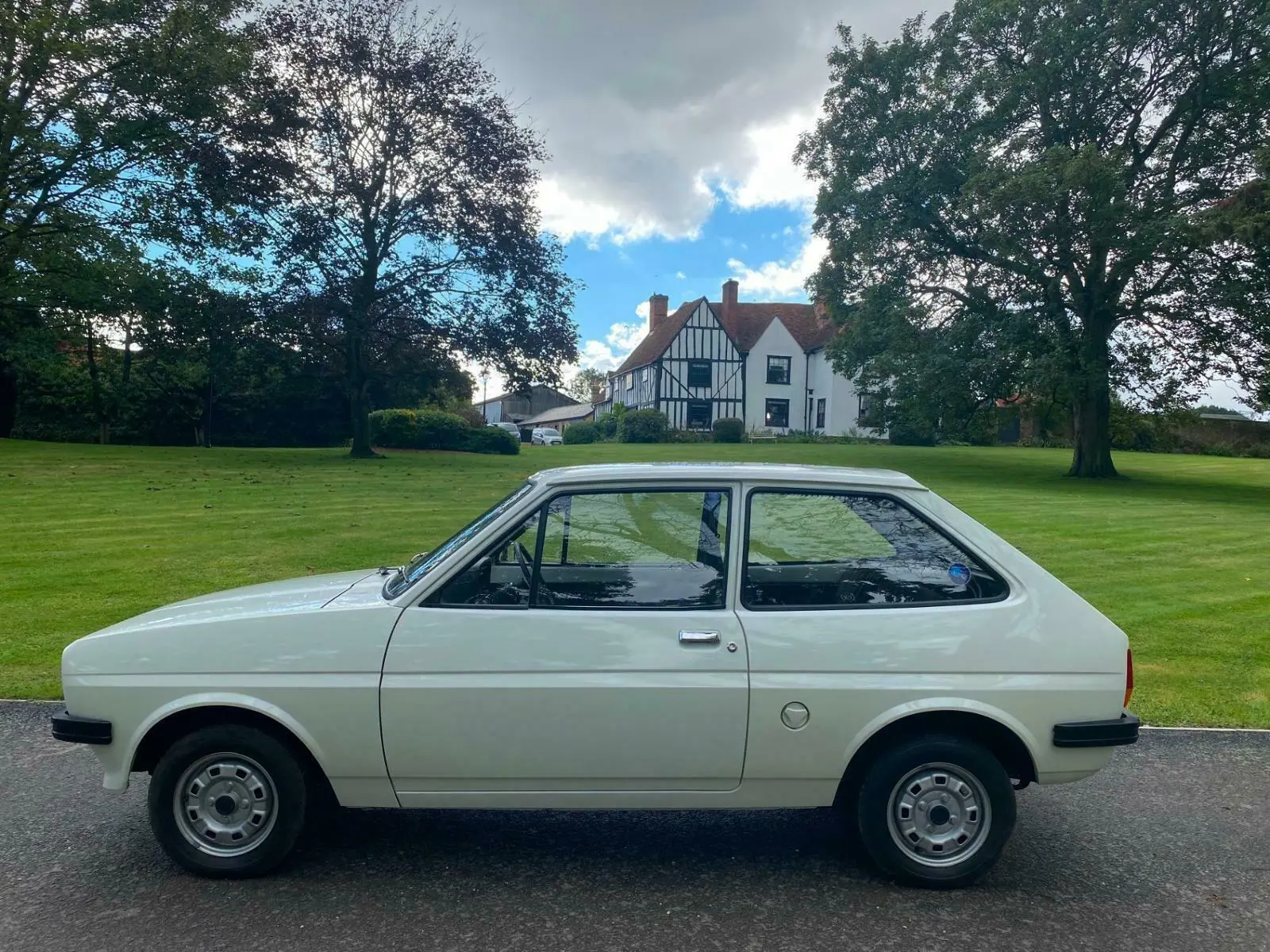A TIMEWARP FORD FIESTA MK. I
25 March 2022
It could almost be 1978 again, for this forty-three-year-old Ford Fiesta L on sale by Performance and Prestige Vehicle Solutions Ltd. has covered just 141 miles since new. In 1981 it was donated to the Science Museum, forming part of their displays until 2017. Today the Fiesta looks as though it has emerged from Carters of Swanwick, this writer’s local Ford dealer of his distant youth. It is certainly a car that would cut a dash along the A27.
And the Fiesta was a refreshing sight in the late ‘seventies. At that time, it had virtually no direct UK built rivals. The Vauxhall Chevette and the Chrysler Sunbeam were slightly larger and RWD, while the Austin Mini Metro lay two in the future. The Ford’s looks alone was a significant sales attraction, with Tom Tjaarda creating a design that made many rivals look dated.

Ford of Europe first considered building a ‘supermini’ on 30th September 1969. Ralph Peters of their UK operations undertook an extensive study and concluded the company could sell a FWD small car in Spain and Italy, countries where the blue oval was underrepresented. 1972 marked the start of the £550 million ‘Project Bobcat’, and Ford evaluated 48 potential competitors. They also tested various versions of the Kent engine in a Fiat 127 bodyshell.
Market research further revealed that 55% of potential owners would be women and that 86% of those questioned listed shopping as their most frequent use of the car. As for a name, ideas ranged from Bambi, Bebe, Bolero, Cherie to Chico, Forito, Metro, Pony, Sierra, Tempo and even Metro. Most executives preferred ‘Bravo’, but Henry Ford II liked ‘Fiesta’.
Manufacture commenced in July 1976, with UK and Irish market cars made in Dagenham. Motor reported Ford transferring production of the Granada range to Cologne to make room for a new model. Meanwhile, a test in Autocar found the Fiesta possessed “flair, driver enjoyment and all-round efficiency”.
British sales commenced on 2nd February 1977, and Ford GB ensured an initial; stock of 10,000 cars in readiness. They also trained their 380 UK dealers in servicing a front-wheel-drive transverse engine vehicle, a radical departure for outlets used to selling Escorts and Cortinas.
Buyers were offered a choice of four trim levels, and the ‘L’ offered luxuries denied owners of the basic version, i.e., fabric trim, reclining front seats with a choice of five positions, a heated rear window, halogen headlamps and a reversing lamp. To look at this Fiesta is also to be reminded that motorists who craved fresh air vents had to aspire to own the S or Ghia. Cheaper models featured only a central outlet connected to the demisters.
In fact, any early Fiesta au naturale is a very unusual sight. Readers of my vintage will recall just how many 950L were decorated with after-market fog lamps and stripes to convince the neighbours that they were in the presence of a ‘sports hatchback’. However, the bold motorist could only sustain this illusion if they never turned the ignition key.
Towards the end of the decade, Fords were the three best-selling cars in the UK; the Cortina took first place, the Escort second, and the Fiesta third. The Performance and Prestige Vehicle Solutions L is a reminder of the importance of Dagenham’s first hatchback. As Patrick Allen promised, it was “a very advanced baby”:
With Thanks To: Performance & Prestige Vehicle Solutions Ltd
Click here to read about the iconic Ford Fiesta.
